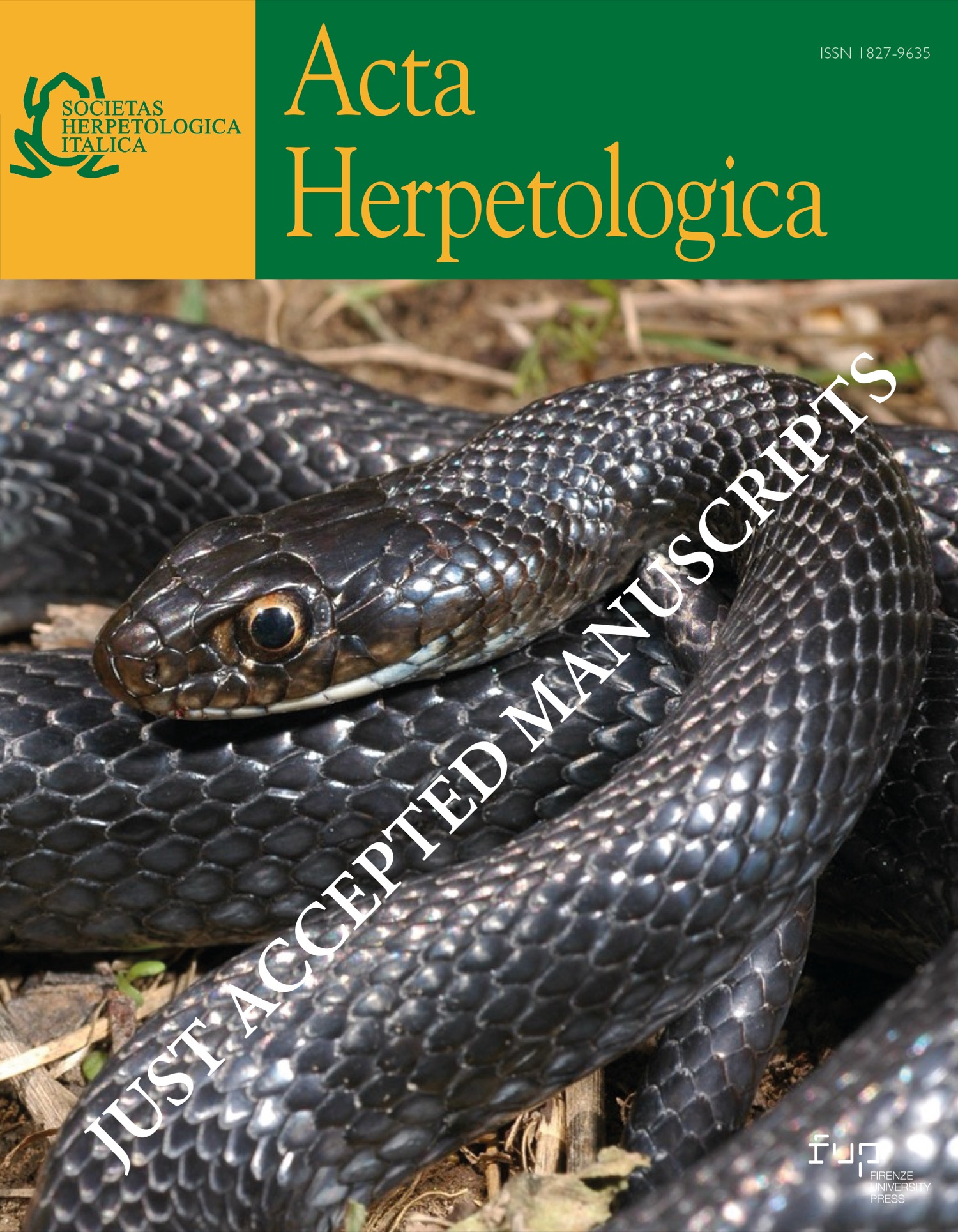Published 2025-11-20
Keywords
- Speleomantes,
- subterranean habitat,
- predator-prey-system,
- removal method,
- entomological traps
- ecological time series ...More
How to Cite
Copyright (c) 2025 Sebastiano Salvidio

This work is licensed under a Creative Commons Attribution 4.0 International License.
Abstract
Subterranean habitats are simplified ecosystems that have been proposed as models for studying ecological interactions in space and time. The present dataset was obtained inside an artificial subterranean tunnel dedicated to long-term research on the resident terrestrial salamander Speleomantes strinatii. To test the possible ecological interactions between the salamander and its prey, the population abundance of the main predator (i.e., salamanders) and its prey (i.e., invertebrates caught in the tunnel) were assessed by standard methods for 13 consecutive years: from 2013 to 2025. Salamander abundance was estimated by three temporary removal samplings, while invertebrates were captured each year by entomological sticky traps. The traps were placed outside and inside the tunnel to also assess the prey spatial distribution along the site. The present dataset provides two complete times series describing a possible predator-prey system over 13 consecutive years. There are no missing data.
References
- Abbott, K., Ripa, J., Ives A.R. (2009): Environmental variation in ecological communities and inferences from single-species data. Ecology 90: 1268-1278.
- Box, G.E.P., Jenkins, J.M. 1(970): Time Series Analysis: Forecasting and Control. Holden-Day, USA.
- Brockwell, P.J., Davies, R. (2002): Introduction to Time Series Analysis and Forecasting, 2nd ed. Springer, USA.
- Costa, A., Oneto, F., Pastorino, M.V., Rosa, G., Salvidio, S. (2024). Long-term Dynamics of a Cave Salamander Population in a Region under Changing Climate. Herpetologica 80: 209-220. https://doi.org/10.1655/Herpetologica-D-23-00029
- Dearden, A.E., Wood, M.J., Frend, H.O., Butt, T.M., Allen, W.N. (2024): Visual modelling can optimise the appearance and capture efficiency of sticky traps used to manage insect pests. Journal of Pest Science, 97: 469-479.
- Lindström, L, Reev,e R., Salvidio, S. (2010): Bayesian salamanders: analysing the demography of an underground population of the European plethodontid Speleomantes strinatii with state-space modelling. BMC Ecology 10: 4.
- Salvidio, S., Pastorino M.V. (2002): Spatial segregation in the European plethodontid salamander Speleomantes strinatii in relation to age and sex. Amphibia-Reptilia, Leiden 23: 505-510.
- Salvidio, S., Lattes, A., Tavano, M., Melodia, F., Pastorino,.V. (1994): Ecology of a Speleomantes ambrosii population inhabiting an artificial tunnel. Amphibia-Reptilia 15: 35-45. DOI:10.1163/156853894X00533.
- Salvidio, S., Costa, A., Oneto, F., Rosa, G., Pastorino, M.V. (2025): No change over three decades in the realized spatial niche of a salamander population living in a subterranean habitat. Current Zoology https://doi.org/10.1093/cz/zoaf016
- Rodriguez de Rivera, O., McCrea, R. (2021): Removal modelling in ecology: A systematic review. PLoS ONE 16: e0229965
- White, G.C., Anderson, D.R., Burnham, K.P., Otis, D.L. (1982): Capture-recapture and removal methods for sampling closed populations. Los Alamos National Laboratory Report LA‐8787‐NERP, Los Alamos, New Mexico.
- Ziebarth, N.L., Abbott, K.C., Ives, A.R. (2010). Weak population regulation in ecological time series. Ecology Letters 13: 21–31. doi: 10.1111/j.1461-0248.2009.01393.x





